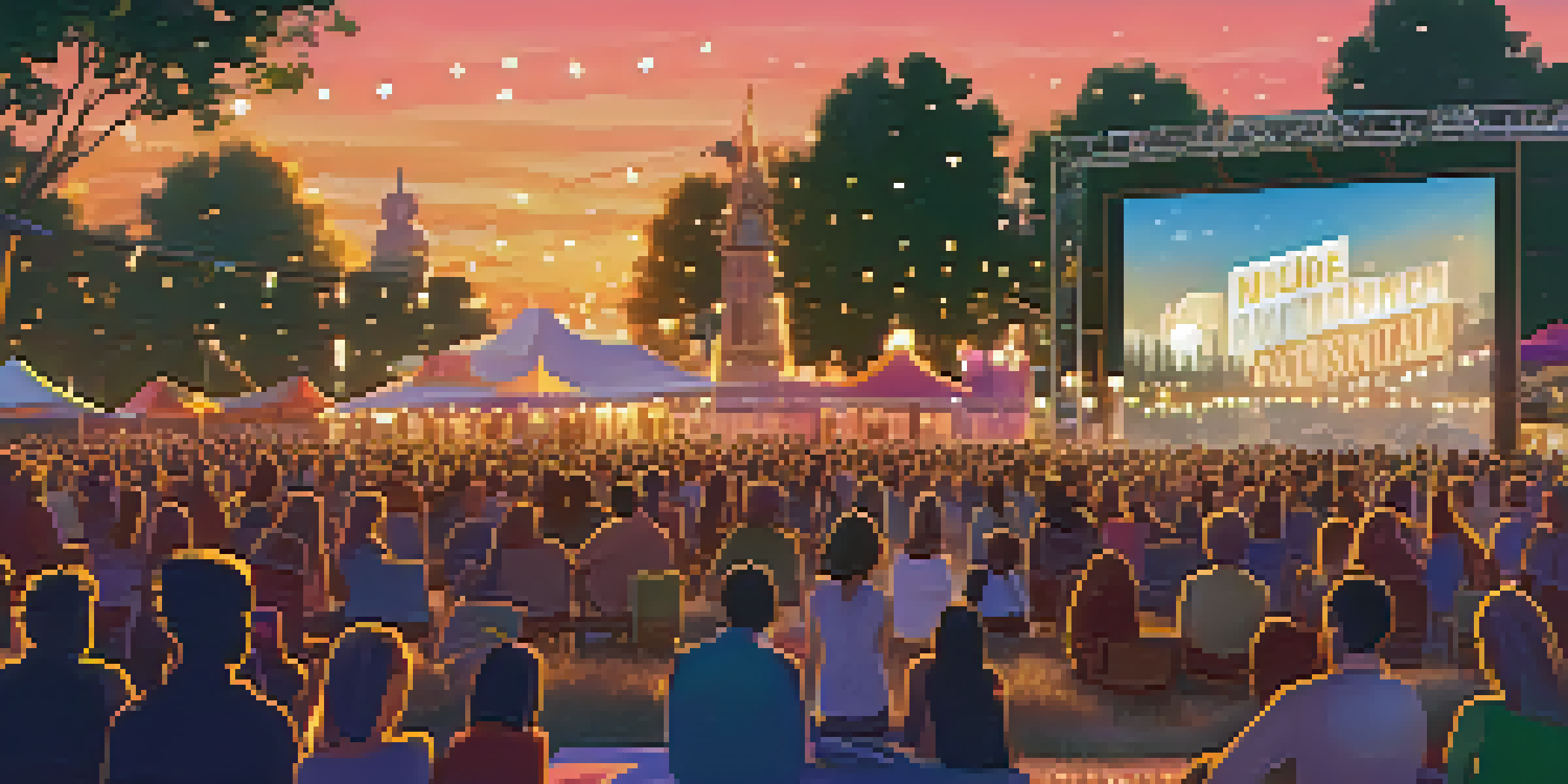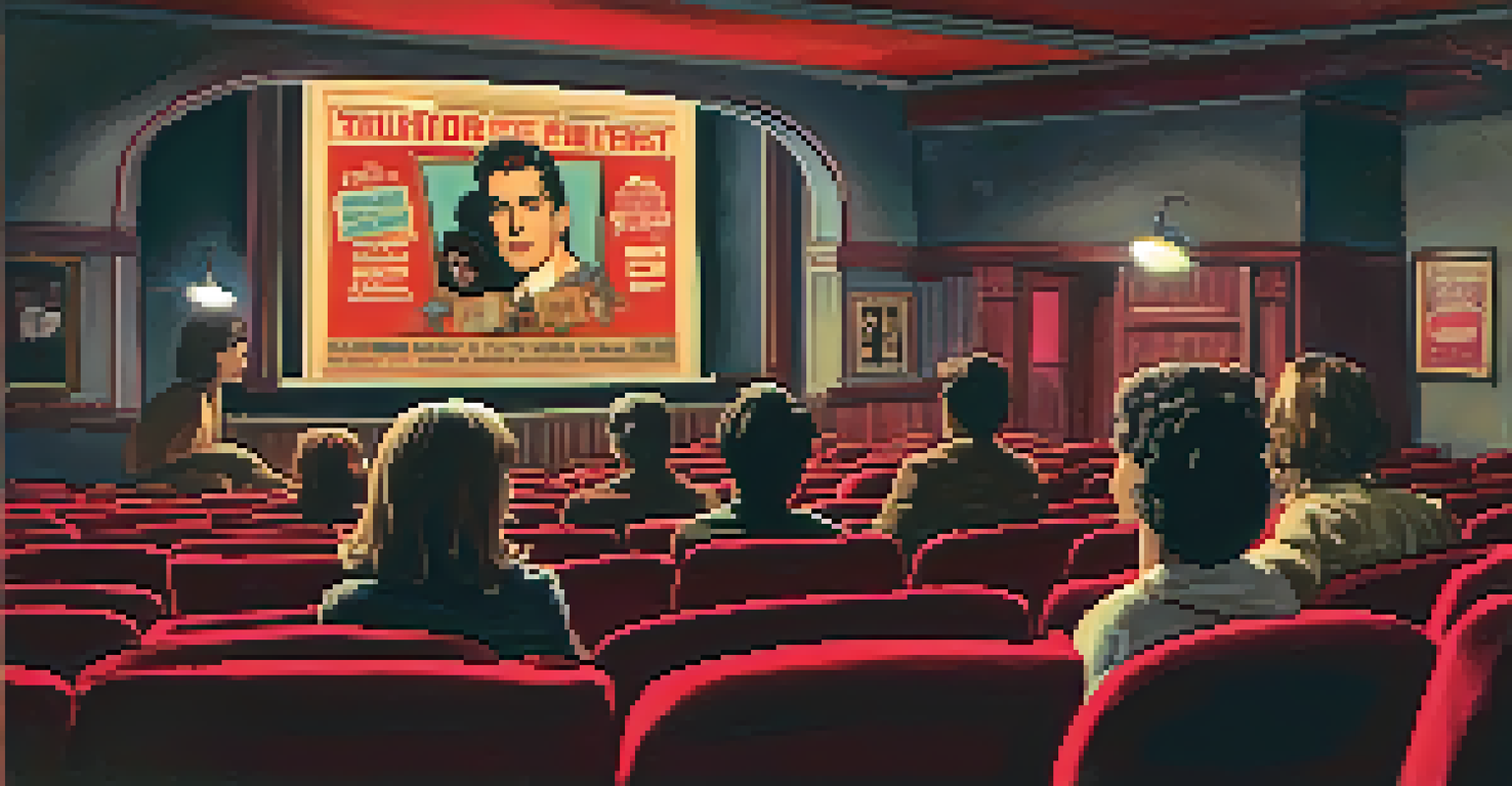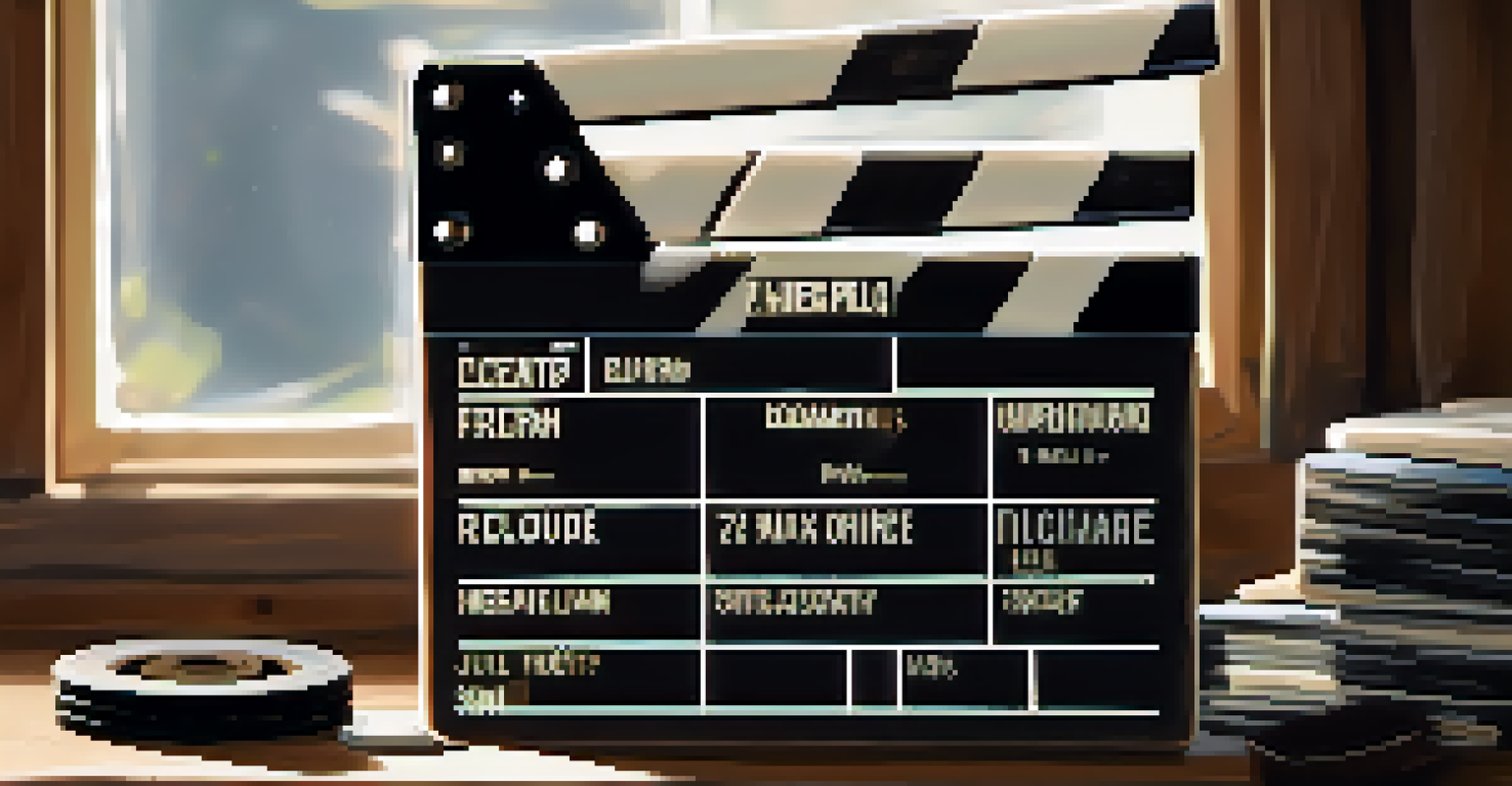From Blockbusters to Indies: The Changing Film Landscape

The Rise of Blockbuster Culture in Cinema
Blockbuster films have long dominated the box office, drawing massive audiences with their star power and high budgets. These films often feature spectacular visuals and gripping storylines that promise an escape from reality. Think of titles like 'Avengers: Endgame' or 'Jurassic World,' which have become cultural phenomena and set records in ticket sales.
Cinema is a matter of what's in the frame and what's out of it.
The rise of blockbusters can be traced back to the 1970s when movies like 'Jaws' and 'Star Wars' changed the landscape of filmmaking. These films not only introduced the concept of the summer blockbuster but also established a formula for success that many studios would replicate. With their extensive marketing campaigns and merchandise tie-ins, blockbusters create an event-like atmosphere that attracts viewers.
However, this focus on blockbuster hits has also led to a formulaic approach to storytelling, often sidelining unique narratives and diverse voices. While the excitement of a blockbuster is undeniable, it raises the question: are we missing out on equally compelling stories that don’t fit the mold?
The Indie Film Movement: A Breath of Fresh Air
Indie films have emerged as a counterbalance to the blockbuster frenzy, offering fresh perspectives and innovative storytelling. These films are often produced with smaller budgets and can take creative risks that mainstream studios may shy away from. For instance, films like 'Moonlight' and 'Lady Bird' have captivated audiences with their intimate narratives and relatable characters.

The beauty of indie cinema lies in its diversity. Filmmakers from various backgrounds are able to tell stories that resonate on a personal level, often exploring themes of identity, love, and social issues. This rich tapestry of narratives showcases the depth of human experience, making indie films a vital part of the cinematic landscape.
Blockbusters Dominate Cinema
Blockbuster films, with their high budgets and star power, continue to draw massive audiences but risk overshadowing unique narratives.
Moreover, the rise of streaming platforms has given indie films a broader audience. With services like Netflix and Amazon Prime actively seeking unique content, viewers have more opportunities than ever to discover and support independent films that might not make it to traditional theaters.
Streaming Services: Changing How We Consume Films
The advent of streaming services has revolutionized how we watch films, shifting away from traditional cinema experiences. With just a few clicks, viewers can access a vast library of content, including indie gems that may not have received the same spotlight in theaters. This convenience allows for greater exploration of diverse genres and stories.
The independent film community is a place where the stories that need to be told can be told.
Streaming platforms also provide a space for indie filmmakers to showcase their work without the constraints of a theatrical release. For example, films like 'The Florida Project' and 'The Vast of Night' have found their audiences online, often leading to critical acclaim and award nominations. This democratization of film distribution allows unique voices to shine.
However, while streaming has its benefits, it also raises questions about the future of cinema. Are we sacrificing the communal experience of watching a film in a theater for the ease of streaming from our couches? Finding a balance between these two experiences is essential for the future of film.
Audience Preferences: Shifting Tastes in Film
As audiences become more discerning, their preferences for film content are evolving. Many viewers are now drawn to stories that challenge the status quo and provoke thought, rather than simply providing entertainment. This shift is evident in the success of films that tackle complex social issues or feature unconventional narratives.
Moreover, the rise of social media has allowed audiences to voice their opinions more than ever before. Platforms like Twitter and Instagram enable fans to champion indie films, share recommendations, and engage in discussions about their favorite titles. This grassroots support can significantly impact the visibility and success of independent filmmakers.
Indie Films Offer Fresh Perspectives
Indie films provide a vital counterbalance to blockbusters, showcasing diverse voices and innovative storytelling often missed in mainstream cinema.
As tastes continue to evolve, it’s clear that viewers are eager for authenticity and relatability in the films they choose. This desire has created a fertile ground for indie films to flourish, proving that there’s a strong appetite for storytelling that resonates on a deeper level.
Diversity in Storytelling: A New Era for Filmmakers
The recent focus on diversity in storytelling has opened doors for a wider array of filmmakers and narratives. Historically, Hollywood has been criticized for its lack of representation, but the landscape is changing as more voices are being heard. From women and people of color to LGBTQ+ filmmakers, the industry is beginning to embrace a broader spectrum of stories.
Indie films often lead the charge in this movement, offering platforms for underrepresented voices to tell their stories authentically. For example, films like 'The Farewell' and 'Minari' highlight cultural experiences that resonate with many, showcasing the richness of different backgrounds. This shift not only enriches the film landscape but also fosters empathy and understanding among audiences.
As more filmmakers from diverse backgrounds step into the limelight, the potential for innovative storytelling grows. The film industry is beginning to reflect the world’s complexities, and this inclusivity is paving the way for a more vibrant cinematic future.
Challenges Faced by Indie Filmmakers Today
Despite the many opportunities for indie filmmakers, they still face significant challenges in getting their work seen. Limited budgets can restrict marketing efforts, making it harder for films to reach potential audiences. Additionally, competition from blockbuster releases and mainstream content can overshadow independent films, even when they offer unique perspectives.
Funding remains a major hurdle as well. Many indie filmmakers rely on grants, crowdfunding, and personal savings to finance their projects, which can create financial stress and limit creative freedom. This struggle for resources can deter talented storytellers from pursuing their vision, resulting in fewer diverse films being made.
Streaming Services Transform Viewing
The rise of streaming services has democratized film access, allowing indie filmmakers to reach wider audiences while challenging traditional cinematic experiences.
Furthermore, navigating distribution channels can be daunting in a crowded market. Many indie films may find it difficult to secure theatrical releases, which can limit their visibility. However, as audiences continue to embrace streaming services, opportunities are beginning to arise for indie films to find their place in the ever-evolving film landscape.
The Future of Film: A Blend of Blockbusters and Indies
Looking ahead, the future of film seems to be moving towards a harmonious blend of blockbusters and indie films. While big-budget productions will likely continue to draw audiences, there is a growing recognition of the value that indie films bring to the table. This coexistence could lead to a richer cinematic landscape filled with diverse narratives and innovative storytelling.
As audiences crave authenticity and originality, studios may start to invest more in indie-style projects, allowing for greater creative freedom. Collaborations between major studios and independent filmmakers are already beginning to emerge, suggesting a trend towards more inclusive storytelling. This could pave the way for a more balanced film industry that values both commercial success and artistic expression.

In the end, the evolution of the film landscape reminds us that storytelling is an ever-changing art form. By embracing both blockbusters and indie films, we can create a more vibrant cinematic future that speaks to a wider array of experiences and perspectives.